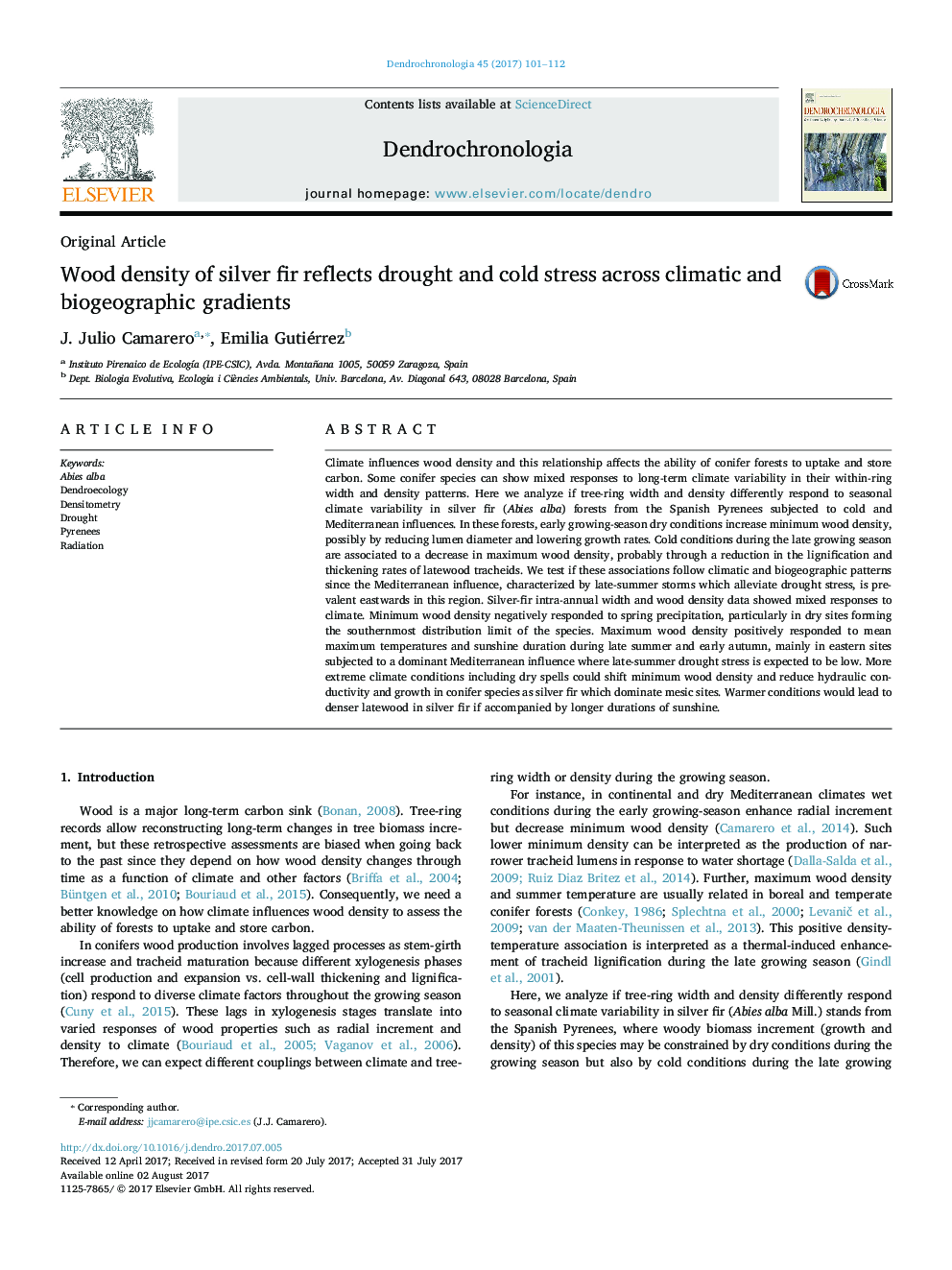| کد مقاله | کد نشریه | سال انتشار | مقاله انگلیسی | نسخه تمام متن |
|---|---|---|---|---|
| 6458976 | 1421196 | 2017 | 12 صفحه PDF | دانلود رایگان |
- Do temperate conifers show mixed tree-ring width and density responses to climate?
- We analyze width and density responses to climate in Pyrenean silver fir stands.
- Minimum wood density negatively responded to spring precipitation.
- Maximum wood density increased as summer temperature and sunshine duration did.
- Droughts could reduce hydraulic conductivity and growth by affecting earlywood density.
Climate influences wood density and this relationship affects the ability of conifer forests to uptake and store carbon. Some conifer species can show mixed responses to long-term climate variability in their within-ring width and density patterns. Here we analyze if tree-ring width and density differently respond to seasonal climate variability in silver fir (Abies alba) forests from the Spanish Pyrenees subjected to cold and Mediterranean influences. In these forests, early growing-season dry conditions increase minimum wood density, possibly by reducing lumen diameter and lowering growth rates. Cold conditions during the late growing season are associated to a decrease in maximum wood density, probably through a reduction in the lignification and thickening rates of latewood tracheids. We test if these associations follow climatic and biogeographic patterns since the Mediterranean influence, characterized by late-summer storms which alleviate drought stress, is prevalent eastwards in this region. Silver-fir intra-annual width and wood density data showed mixed responses to climate. Minimum wood density negatively responded to spring precipitation, particularly in dry sites forming the southernmost distribution limit of the species. Maximum wood density positively responded to mean maximum temperatures and sunshine duration during late summer and early autumn, mainly in eastern sites subjected to a dominant Mediterranean influence where late-summer drought stress is expected to be low. More extreme climate conditions including dry spells could shift minimum wood density and reduce hydraulic conductivity and growth in conifer species as silver fir which dominate mesic sites. Warmer conditions would lead to denser latewood in silver fir if accompanied by longer durations of sunshine.
Journal: Dendrochronologia - Volume 45, October 2017, Pages 101-112
